The Apple Watch Series 2 Review: Building Towards Maturity
by Brandon Chester on December 20, 2016 8:00 AM EST- Posted in
- Wearables
- Apple
- Apple Watch
- Apple Watch Series 2
Design
A watch is deeply personal in a way that smartphones generally are not. A smartphone goes into your pocket, while a watch is always visible on your wrist. Because of this, smartwatches end up being closer to clothing and jewelery than technology from a design perspective, and this makes getting the design right absolutely essential. That being said, smartwatches are not just digital watches that do some extra things, and simply copying the design of traditional watches can end up missing the opportunity to re-think how watches are made when designing a smartwatch.
The rectangular design of the Apple Watch will definitely be a point of contention for some people. Generally traditional analog watches have used a circular face because the clock is made up of vertical poles that are fixed at one point and rotate around it. While mimicking this would be a great way to make the Apple Watch look exactly like a traditional watch, it would also cripple the information density on a canvas where space is already severely limited. On a round display, any application that displays text is effectively limited to the space of a rectangle drawn within the circle, which means approximately 30% of the area is wasted in the best case. Round displays also preclude the use of table view interfaces, which are of immense importance when designing apps for space-constrained devices. Given these issues, it’s not surprising that Apple went forward with a rectangular design for the Apple Watch and its display, even if it puts the Apple Watch out of sync with many regular watches.
The one other area where the Apple Watch departs from the standards of traditional watches is its thickness. To be honest, this hasn’t posed an issue for me in general use, but several people I know have commented on the watch being significantly thicker than their regular watches. In the case of Apple Watch Series 2, the thickness has actually increased from that of the first generation, but I haven’t been able to notice this in practice despite moving from the first generation model to Series 2. As someone who wasn’t used to wearing a watch, getting used to having something on my wrist required a great deal of adjustment on its own, and at some point I simply got used to it being there and didn’t have to concern myself with its mass or thickness.
While there are some physical changes like the increased thickness, the overall aesthetics of the Apple Watch Series 2 are the same as the first generation. Although Apple has changed the functionality of the controls in watchOS 3, the watch retains the Digital Crown and action button on its right side. The Digital Crown is Apple’s solution to the problem of touch input on a smartwatch covering up all the content on the screen. It can be used to scroll vertically or horizontally through screens and individual menus, as well as to zoom when contextually relevant. In the context of a rectangular watch this is definitely the best solution I’ve seen so far, but Samsung’s Gear S3 definitely deserves a mention for applying a similar concept to their round watch where the bezel around the screen can be rotated to navigate through the UI. For users who have never had a chance to interact with the Apple Watch, it’s worth mentioning that the Digital Crown isn’t controlled like a knob by pinching it with two fingers and rotating. It has just the right amount of friction to allow rotation by rolling your finger across the top of it, without also running into problems with it being accidentally triggered.
The left side of the chassis has a pair of vertical slits, as well as two drilled holes. Like the first Apple Watch, the slits are for the watch’s internal speaker, which provides much better audio quality than you’d expect from such a tiny device. As for the two drilled holes, the second hole did not exist on the original Apple Watch and was something of a mystery when Series 2 first launched. The original Apple Watch generally did a good job of capturing the user’s voice, but there’s always room for improvement and so I originally assumed that it was for a second noise-cancelling microphone. However, the hole is actually a barometric vent to allow accurate measurements of altitude even with the Series 2’s more waterproof design. Apple does not explicitly advertise that the Series 2 comes with a barometer, but teardowns of the watch have confirmed that it includes one.
Like the original Apple Watch, the casing of the Apple Watch Series 2 comes in three different materials. Unlike the original, these are only segmented into two product lines rather than three. With the first Apple Watch, the aluminum models were the Apple Watch Sport, the steel model were just called Apple Watch, and the gold models were Apple Watch Edition. For Series 2, Apple has consolidated the aluminum and steel models under the Apple Watch title, and the Apple Watch Edition is now a white ceramic model priced at $1249 for 38mm and $1299 for 42mm. $1249 is still quite a bit more than the entry-level aluminum Series 2 model which is $369, but it’s substantially less than the $10,000 starting price of the gold Edition model.
From left to right: Sport, Classic Buckle, Milanese Loop, Woven Nylon, Leather Loop
While the case provides one half of the Apple Watch’s design, the watch bands provide the other. The Apple Watch launched with a large selection of bands, and that selection has grown over time. Our original Apple Watch review was based on the 42mm steel Apple Watch with the silver Milanese Loop band. For this review the watch I was given came with the black Woven Nylon band, which is a newer band that didn’t exist at the time the original model was launched.
To be quite honest, I’m not a huge fan of the Woven Nylon band for the Apple Watch. My original Apple Watch that I bought for investigating app development and familiarizing myself with the operating system was a first generation Apple Watch Sport with a black Sport Band. At a visual level, there’s nothing that’s really wrong with the nylon band, and it’s not uncomfortable to wear. What I dislike about it is the fact that it doesn’t go well with Apple Watch Series 2’s improved waterproofing, because it absorbs water, which makes it unsuitable for activities where the watch will be submerged as the band will be unpleasantly damp for a long period afterward. The sport band didn’t absorb water, and in fact, any water on its surface would drop off within a matter of seconds.
The Woven Nylon band also isn’t holding up as well as my Sport Band did, with the stitching becoming worn at the edges as well as where the plastic pin passes through the holes in the band to complete the loop. I would suggest opting for the model with the Sport Band when purchasing the Apple Watch, and if you’re looking into additional bands, I think the Classic Buckle, Leather Loop, and Milanese Loop bands are nice steps up from the Sport Band without breaking the bank. Series 2 is also completely compatible with existing bands, so if you’re upgrading from the previous model you don’t need to buy new bands unless you're also changing the size of the case.
Smartwatches are not compatible with winter clothing
Apple Watch Series 2 carries on the same design as the original model. If you’re not a fan of wearing a watch, or you didn’t like the original Apple Watch’s design, Apple Watch Series 2 isn’t going to do anything to change your mind. If you’re a fan of Apple’s design direction with the Apple Watch, then Series 2 will keep you happy. Based on Apple’s history I don’t think it will be surprising to see them aggressively drive down the thickness of the case in a later version, but right now the battery life constraints of a smartwatch mean that this sort of form-factor and case size won’t be going away in the near future.


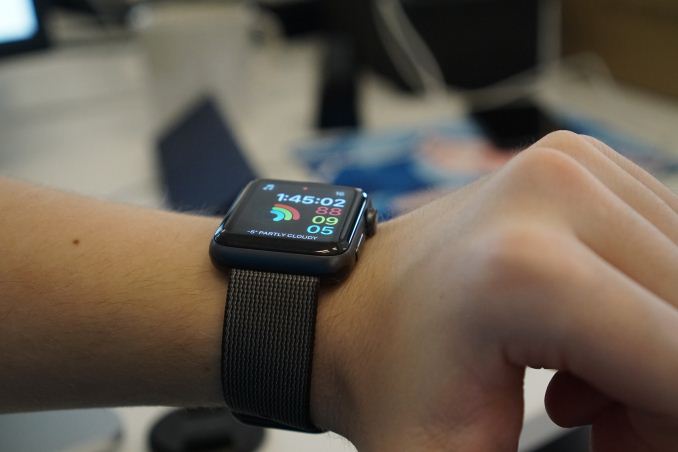
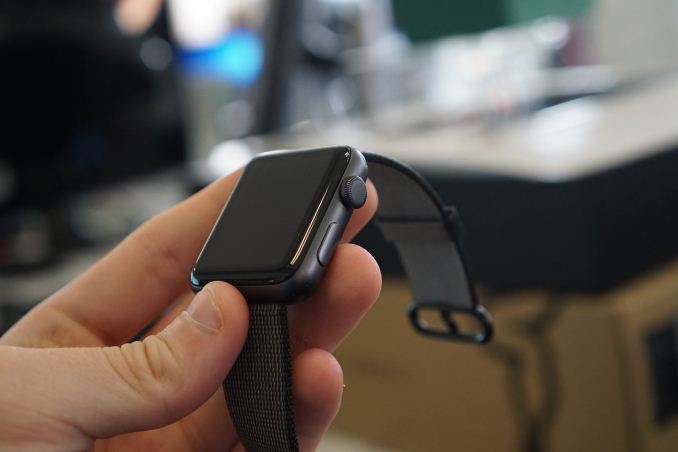
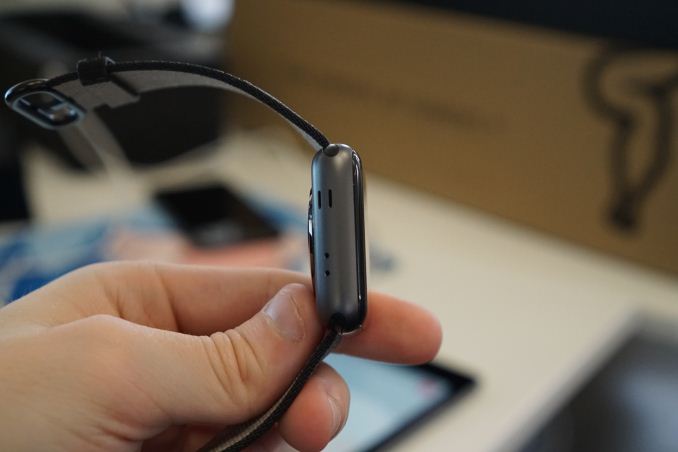
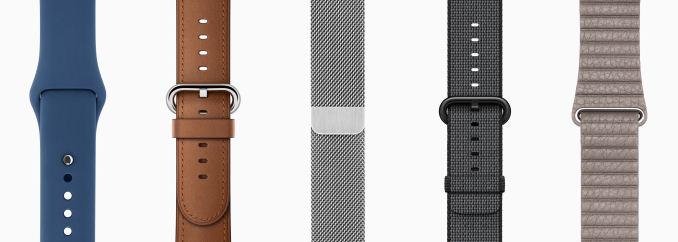
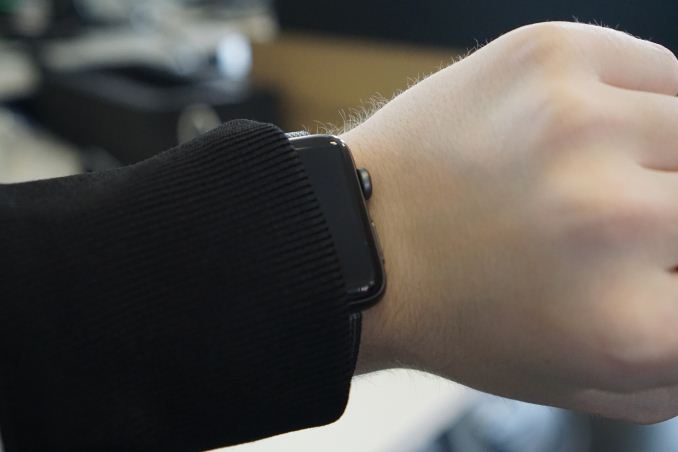








126 Comments
View All Comments
fanofanand - Tuesday, December 20, 2016 - link
The iNag that requires an iPhone can be had for as low as $1100+ tax. Of course that is the smallest cheapest watch with the smallest cheapest iPhone (not counting the SE, if you are buying the "cheap iPhone you probably aren't dropping the coin for the watch). This is still a solution looking for a problem. This performs the same service as a $40 fitbit and a $10 mp3 player. We were told repeatedly that watches are fashion statements and people want to make that fashion statement but the deletion of the outrageously priced gold model says otherwise. People don't want a $12k piece of tech that is obsolete the day it's bought. They were cashing in on the Apple hype. It actually might make sense for someone 5+ years from now when these devices have staying power like today's phones, but it's beyond foolish as an early adopter.Apple has lost their mojo. Minor iterations with their phones but nothing revolutionary, the failed iCar (or whatever they were going to call it), the failed watch, the failed iPad Pro, the decidedly non-pro Macbook Pro, failing to update the iMac for several years, Apple is a floundering directionless company right now. If it weren't for the iTunes store and their phones they would be really hurting as a company.
tipoo - Tuesday, December 20, 2016 - link
1000 nits. Yowza. Wonder how much power the screen takes at that brightness, and if/when laptops will get there. The new MBPs were impressive at 500 nits.Ryan Smith - Tuesday, December 20, 2016 - link
I can't believe I have to write this, but as a matter of transparency I have just deleted 4 comments. This is a technology news site, not a politics blog. Please leave the politics at home.sorten - Tuesday, December 20, 2016 - link
This market is much smaller than Apple was expecting. I wonder if they'll put the effort into a 3rd generation.name99 - Tuesday, December 20, 2016 - link
How do you know what sized market Apple was expecting?They sell about a million a month, coming to around $4 billion a year. That makes them the second largest watch company in the world (if you insist on comparing that way) and however you measure it, $4 billion is not a bad business.
sorten - Tuesday, December 20, 2016 - link
I don't have any hard numbers for Apple expectations, but as a one time Apple stockholder I know they need to find a hot new product to fill the gap left by stalling iPhone and iPad sales. The latest numbers on the smart watch market (someone else linked it above) show that the whole market is already shrinking, so it's clear that this is not going to be Apple's next big cash cow.name99 - Tuesday, December 20, 2016 - link
The difference between you and Apple is that Apple is not so out of touch with reality that they imagine you can create a $25 billion business in a year...As I keep saying --- look at the iPhone sales patterns in the first few years for at least some marginal calibration with how the real world works.
fanofanand - Wednesday, December 21, 2016 - link
Except everybody has a cell phone, few people today wear a watch. Your analogy is poor at best.name99 - Wednesday, December 21, 2016 - link
And in 2000 most people did NOT have a cell phone...The world changes, you know.
fanofanand - Thursday, December 22, 2016 - link
You are applying false equivalence. Just because people wanted the convenience of having a communication device on the go, that means people will equally demand a superfluous piece of tech that performs no service that the user doesn't already have with their phone? Tell me shill, what does the watch do that couldn't be done without? Before cell phones people had to stop at a pay phone to communicate with someone. Unless you have to stop everything you are doing and seek out a clock somewhere (which you don't because the clock is already on your phone which is required for the watch) there is no equivalence. The cell phone met a demand, a demand that was already in existence but only the wealthy could afford (car phone). The apple watch meets no such demand, it is merely a luxury device that isn't even standalone.